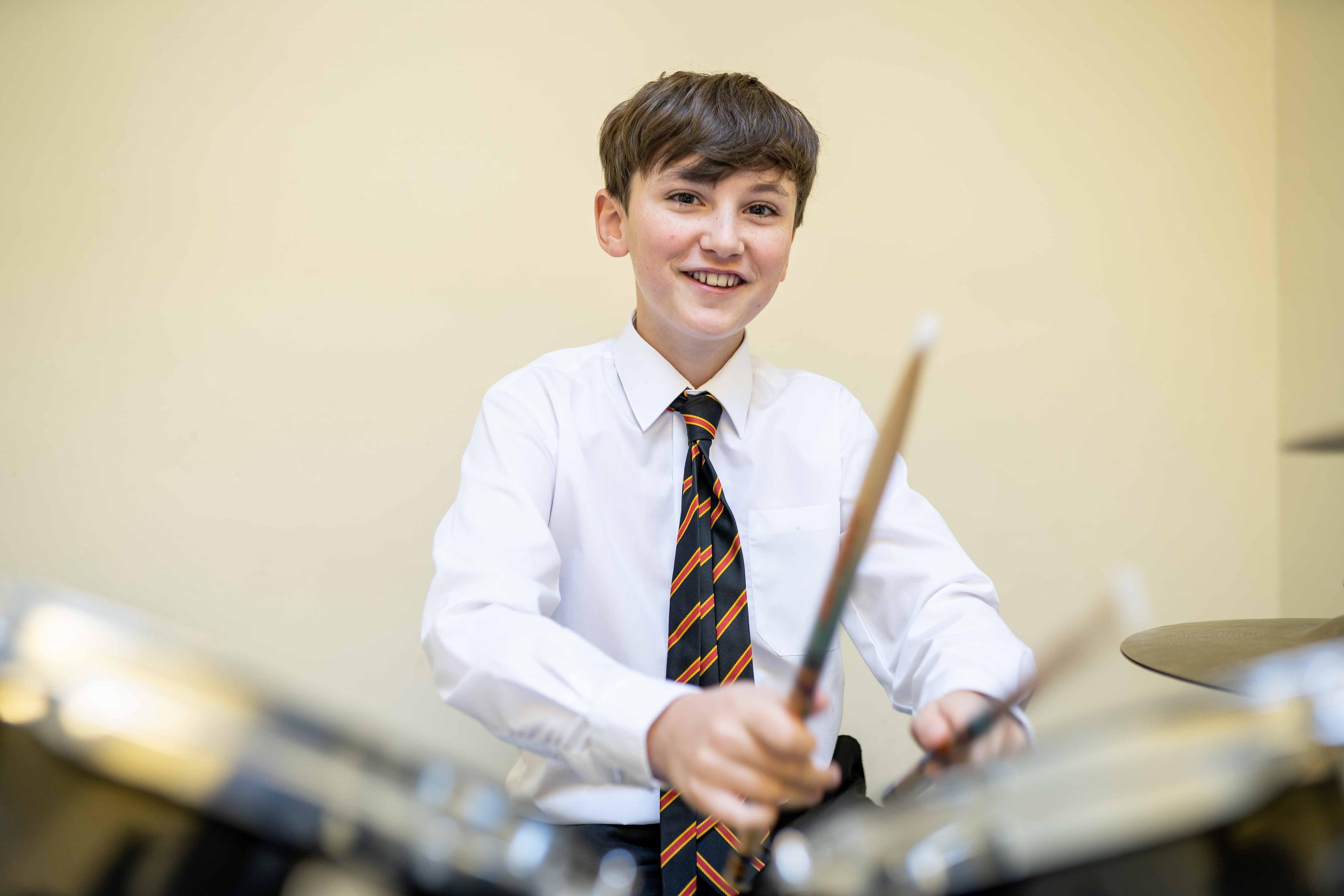
2 minute read
Music
The course covers the three main activities of music:
• listening
Advertisement
• performing
• composition
The listening (“Understanding Music”) is the only examined component, worth 40% of the overall marks, with an exam of one and a half hours.
There are four areas of study Western Classical tradition, 1650 – 1910 is the only compulsory area This area includes a specific study piece, Mozart Clarinet Concerto in A major, 3rd movement, Rondo. Questions will require short observations about specific passages, along with a more extended question asking for pupils to show their understanding of the context of the piece. This ensures students have a solid musical foundation before we begin to explore these key musical concepts further in the other areas of study
There are three further areas to choose from, only two must be studied: Little Shop of Horrors, Paul Simon’s Graceland and Zoltán Kodály: Battle and Defeat of Napoleon and Intermezzo from Háry János. Students must also familiarise themselves with the following respective lists which accompany their set works: The Coronation Anthems and Oratorios of Handel, The Orchestra Music of Haydn, Mozart and Beethoven, the piano Music of Chopin and Schumann, the Requiem of the late Romantic period. Music of Broadway 1950s to 1990s rock music of 1960s and 1970s, film and computer gaming music, 1990s to present Pop Music 1990s to present. Blues Music from 1920–1950 Fusion Music incorporating African and/or Caribbean Music, Contemporary Latin Music Contemporary Folk Music of the British Isles.
The performance component is worth 30% of the total and involves one solo performance, and one as part of an ensemble. The performances must last at least 4 minutes, are then marked in School, before being externally moderated.
The remaining 30% of the GCSE is taken up with composing Pupils have to show that they can develop and manipulate musical ideas to produce musically convincing compositions. There are two compositions. One is a response to an externally set brief, and needs to demonstrate use of at least four musical elements: Two out of rhythm, metre, texture, melody, structure and form, and two of harmony, tonality, timbre, dynamics, phrasing and articulation; however, the actual composition can be in any style or genre, so boys can work within areas which allow them to show their experience and enthusiasm. The second composition is “free”, in that there is no brief, but must still explore four musical elements. Both compositions need to be notated in an appropriate manner – which may be traditional stave notation, a lead sheet, or other relevant forms of score Both also need to be recorded, and this is something important to remember during the composition process A grounding in theory and harmony is given, along with contextual work, which means this specification provides excellent preparation for A-level Music. This is an enjoyable course, with plenty of scope for candidates to exploit their own particular strengths and interests.
Mr C Harrison Head of Performing Arts
c.harrison@merchanttaylors.com







